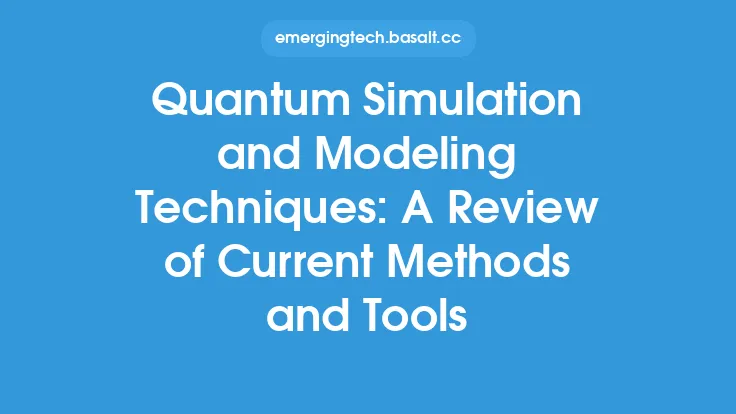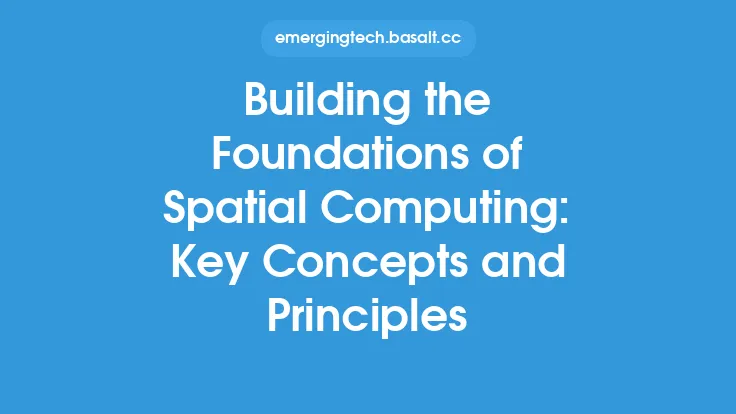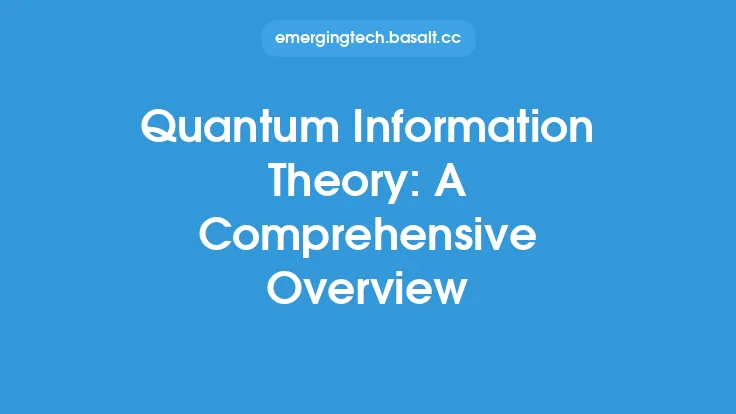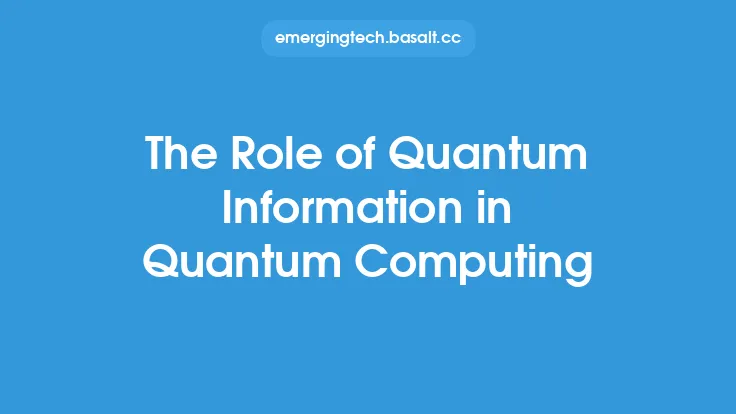Quantum information processing is a fundamental aspect of quantum computing, enabling the manipulation and transmission of quantum information in a reliable and efficient manner. This field has garnered significant attention in recent years due to its potential to revolutionize various areas of science and engineering. At its core, quantum information processing relies on the principles of quantum mechanics, which describe the behavior of matter and energy at the smallest scales.
Introduction to Quantum Bits and Quantum Gates
In classical computing, information is represented using bits, which can exist in one of two states: 0 or 1. In contrast, quantum computing utilizes quantum bits or qubits, which can exist in a superposition of both 0 and 1 simultaneously. This property allows qubits to process multiple possibilities simultaneously, making them potentially much more powerful than classical bits. Quantum gates are the quantum equivalent of logic gates in classical computing and are used to manipulate qubits. These gates can be combined to perform complex operations, such as quantum algorithms, which are the quantum counterparts of classical algorithms.
Quantum Information Processing Techniques
Several techniques are used in quantum information processing to manipulate and transmit quantum information. Quantum teleportation is a technique that allows the transfer of quantum information from one location to another without physical transport of the information itself. This is achieved through the use of entangled particles, which are connected in such a way that the state of one particle is instantly affected by the state of the other, regardless of the distance between them. Another technique is superdense coding, which enables the transmission of multiple classical bits of information through a single qubit. This is possible because a qubit can exist in multiple states simultaneously, allowing it to encode more information than a classical bit.
Quantum Error Correction and Noise Mitigation
Quantum information is inherently fragile and prone to errors due to the noisy nature of quantum systems. Quantum error correction is a crucial aspect of quantum information processing, as it enables the detection and correction of errors that occur during quantum computations. Various quantum error correction codes have been developed, including surface codes, Shor codes, and concatenated codes. These codes work by encoding quantum information in a redundant manner, allowing errors to be detected and corrected. Noise mitigation is also essential in quantum information processing, as it helps to reduce the effects of noise on quantum systems. Techniques such as dynamical decoupling and quantum error correction with noise mitigation have been developed to address this issue.
Quantum Information Processing Applications
Quantum information processing has various applications in fields such as cryptography, simulation, and optimization. Quantum cryptography, for example, uses quantum mechanics to create secure communication channels. Quantum simulation is another area where quantum information processing can be applied, enabling the simulation of complex quantum systems that are difficult or impossible to simulate classically. Quantum optimization is also an area of interest, where quantum algorithms can be used to solve complex optimization problems more efficiently than classical algorithms.
Quantum Computing Hardware and Architectures
The development of quantum computing hardware and architectures is crucial for the implementation of quantum information processing. Various types of quantum computing hardware have been developed, including superconducting qubits, ion traps, and topological quantum computers. Quantum computing architectures, such as the quantum circuit model and the adiabatic quantum computer, have also been developed to support the implementation of quantum algorithms. These architectures provide a framework for the design and implementation of quantum computers, enabling the efficient execution of quantum algorithms.
Challenges and Future Directions
Despite the significant progress made in quantum information processing, several challenges remain to be addressed. One of the major challenges is the development of scalable and reliable quantum computing hardware. Currently, most quantum computing hardware is prone to errors and is not scalable to a large number of qubits. Another challenge is the development of practical quantum algorithms that can be used to solve real-world problems. While several quantum algorithms have been developed, most of them are still in the theoretical stage and require further development to be practical. Future research directions include the development of more robust and efficient quantum error correction codes, the improvement of quantum computing hardware, and the development of practical quantum algorithms for real-world applications.
Conclusion
Quantum information processing is a rapidly evolving field that has the potential to revolutionize various areas of science and engineering. The development of quantum computing hardware and architectures, quantum error correction codes, and practical quantum algorithms is crucial for the implementation of quantum information processing. While significant progress has been made, several challenges remain to be addressed, including the development of scalable and reliable quantum computing hardware and the development of practical quantum algorithms. As research continues to advance in this field, we can expect to see significant breakthroughs and innovations that will enable the widespread adoption of quantum information processing technologies.





